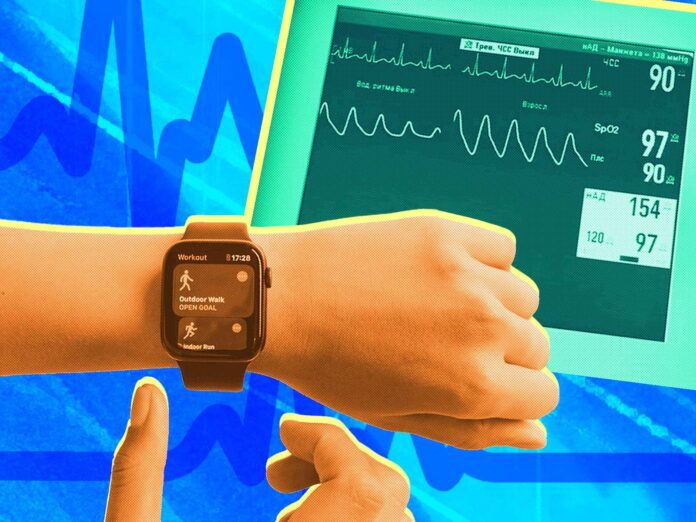Tech Mahindra launches a sports cloud platform built on AWS to provide an immersive fan experience globally
SOURCE: HTTPS://WWW.MAHINDRA.COM/
NOV 27, 2023
Meeting the Future: Internet of Bodies
SOURCE: IOTFORALL.COM
FEB 17, 2022

The global internet of things (IoT) in healthcare market is projected to grow to $446.52 billion by 2028, according to Fortune Business Insights. Integration of IoT technologies and medical care drive exciting innovations, resulting in more effective healthcare solutions. One of these new innovations is the Internet of Bodies. Let’s find out exactly what it is and the ways in which it can revolutionize our lives.
In recent years, the healthcare industry has been undergoing significant technology-related changes. Several of these changes include the use of augmented reality applications to assist doctors during surgery, the introduction of AI to improve the efficiency of diagnostic processes and, of course, the surge of IoT devices that are becoming more widespread. This list would be incomplete without the Internet of Bodies.
IoB gadgets are wearable, ingestible, or implantable. We can consider IoB as an ecosystem of devices that are connected to the Internet. Following the Web of Things concept, IoB enhances the interoperability and connectivity of smart devices by standardizing communication protocols between different IoT smart devices. In healthcare, they gather crucial data at the core of precision medicine. This enables accurate treatment for the needs of the particular person.
Having first appeared in 2016, the term the Internet of Bodies (IoB) came into general use, bringing together all devices that monitor the human body. Some devices include the following:
Outside of healthcare, IoB products are also used as commercial devices. This can include any of the following:
The possibility to perceive the body as the source of data lies in the core of IoB. The concept isn’t fully clear, though it appears to be a promising perspective.
The Internet of Bodies is classified as a variety of IoT that enhances engagement between devices and our bodies. Its widespread implementation improves the accuracy of treatment as well as human well-being. For example, the device has the capability to automate insulin dosing for diabetics. Other advantages of IoB implementation include possibilities to personalize insurance plans, improve performance, and develop preventative healthcare.
However, the type and amount of received data depends on the IoB gadget and its operation on different levels:
In regards to the classification of IoB gadgets, there are three generations:
Application of IoB can become one of the main trends in healthcare, enabling 24/7 monitoring of health and obtaining full statistics related to any deviation from standard criteria.
The IoB wristband works to send ultrasonic pulses to check hand movements and the location of an employee. The device vibrates if lack or total absence of activity is recorded. Implementation of such a device in the workplace improves productivity. Also, it helps help companies care more about the health of their employees, which is the number one priority for everyone in the post-COVID-19 world.
These IoB devices are implanted in the chest and connected with the heart. The transmitter located in the user’s house receives data regarding the heart’s functioning and transfers information to the doctor. Moreover, the device normalizes heartbeat and treats health problems.
Internet of Bodies helps to monitor patients in terms of COVID-19. For example, doctors in China have been using digital thermometers to monitor the patient’s temperature without contacting them. Digital thermometers prevent the spread of COVID-19 and are combined with other IoB devices for real-time monitoring to provide remote control and diagnostics.
An embedded device, the Brain-computer Interfaces (BCIs), may be considered as a breakthrough since it allows users to control devices via brain signals and significantly improves lives of people with disabilities.
In healthcare, IoB use cases are still the most common. But we continue to see IoB gadgets being used in other areas, such as sports and even the military. There are now wearables that monitor the performance of athletes can take other forms. Military IoB use cases include the monitoring of soldiers by tracking their emotional and physical state, location, and current condition. Simulation of combat situations serves as a source of data that describes the reaction of the body in critical conditions.
IoB adoption is closely associated with the potential risks of stolen information. This can be collected and misused, leading to the disruption in the normal functioning of a device. The potential threats are similar to those of other IoT devices, but risks are higher since IoB devices are connected to the body and its functioning. The number of risks is increased if IoB cybersecurity modules aren’t effective, or if data encryption approaches are outdated.
Proper regulations must also be ensured, and the people who apply IoB devices must fully own biometric data, so the devices are not adopted in public settings. If they are, they may begin to monitor people around the user, violating the privacy regulations. A prominent example of a privacy violation is Amazon’s solution. The company introduced arm motion trackers for employees in warehouses. But this is a violation of privacy, as they were collecting personal information about the workers.
Overall, the future of IoB is blurred, but the number of IoB use cases continues to grow. From providing automated, remote patient care, to increasing community engagement in self-health management, the Internet of Bodies brings technology innovations to improve living standards. If risks and rewards are balanced, IoB devices will become an integral part of our lives.
LATEST NEWS
Augmented Reality
Hi-tech smart glasses connecting rural and remote aged care residents to clinicians
NOV 20, 2023
WHAT'S TRENDING


Data Science
5 Imaginative Data Science Projects That Can Make Your Portfolio Stand Out
OCT 05, 2022

SOURCE: HTTPS://WWW.MAHINDRA.COM/
NOV 27, 2023
SOURCE: HTTPS://WWW.IOTTECHNEWS.COM/
OCT 27, 2023
SOURCE: HTTPS://WWW.THEDAILYSTAR.NET/CAMPUS/
OCT 01, 2023
SOURCE: HTTPS://WWW.IOTFORALL.COM/
SEP 11, 2023
SOURCE: HTTPS://WWW.IOTTECHNEWS.COM/
AUG 10, 2023
SOURCE: HTTPS://WWW.SCIENCEDAILY.COM/
AUG 11, 2023